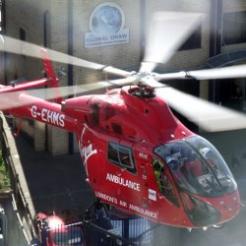London’s Air Ambulance has signed a research and development deal with the Norwegian Air Ambulance.
The agreement aims to help both organisations improve the quality of their pre-hospital care and ensure that research and development is high on both organisations’ agendas.
The Norwegian Air Ambulance has a comprehensive research programme and a unique designated centre for training and development, as well as strong links with Norwegian Universities.
Its London equivalent says it has trained the majority of pre-hospital clinical leaders in the UK.
The two bodies have held three meetings to agree a common approach to research and quality improvement.
The meetings have involved pre-hospital leaders from Europe and beyond and have been hosted and funded by the Norwegian Air Ambulance.
The latest meeting set the international research priorities for pre-hospital critical care for the future, the results of which will soon be published in the Scandinavian Journal of Trauma, Resuscitation and Emergency Medicine.
Hans Morten Lossius, research and development director of the Norwegian Air Ambulance, said he was very pleased to have formalised a partnership with London’s Air Ambulance.
“Norwegian Air Ambulance has prioritised research in recent years. To ensure good research, we are however, dependent on good cooperation across national borders. A partnership with such a well-respected and professional environment that London’s Air Ambulance represents, gives us the opportunity to exchange experiences and engage in systematic collaboration that enables us to produce better research for the benefit of patients.”
Dr David Lockey, research and development lead at London’s Air Ambulance, added: “Our colleagues in Norway have made great steps in moving research and training forwards and we expect this collaboration to be a springboard for the improvement of pre-hospital critical care.”









